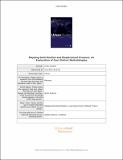Mapping gentrification and displacement pressure: An exploration of four distinct methodologies
Author(s)
Preis, Benjamin; Janakiraman, Aarthi; Bob, Alex; Steil, Justin P
DownloadOpen_Access_Preis_Janakiraman_Bob_Steil_Mapping_Gentrification_2020.pdf (14.27Mb)
Open Access Policy
Open Access Policy
Creative Commons Attribution-Noncommercial-Share Alike
Terms of use
Metadata
Show full item recordAbstract
As housing costs continue to increase across many cities in North America and Europe, local governments face pressure to understand how housing’s rising cost is changing neighbourhoods and to ensure that everyone can access a home they can afford. To confront displacement concerns, cities are adapting models developed within academia to identify neighbourhoods that may be susceptible to gentrification and displacement. We compare four gentrification and displacement risk models developed by and for the US cities of Seattle, Washington; Los Angeles, California; Portland, Oregon; and Philadelphia, Pennsylvania, and apply all four methodologies to one city, Boston. We identify the geographic areas of agreement and disagreement among the methods. The comparison reveals striking differences between the models, both in inputs and outputs. Of the 18 variables considered among the four models, only two variables appear in all four models. In the resulting maps, the four methods identified between 25 and 119 of the 180 Boston census tracts as at risk of gentrification and displacement, or as currently gentrifying. There are only seven tracts that all four models agreed were either gentrifying or at risk of gentrification and displacement. The findings indicate a need for cities to consider critically the assumptions of the models that are included in urban policy documents, as indicators and thresholds have major impacts on how neighbourhoods in the liminal space of gentrification and displacement are characterised. This novel comparison of United States local government analyses of gentrification provides insight as modelling moves from theory to practice.
Date issued
2020-02Department
Massachusetts Institute of Technology. Department of Urban Studies and PlanningJournal
Urban Studies
Publisher
SAGE Publications
Citation
Preis, Benjamin et al. "Mapping gentrification and displacement pressure: An exploration of four distinct methodologies." Urban Studies (February 2020): 1-20 © 2020 Urban Studies Journal Limited
Version: Author's final manuscript
ISSN
0042-0980
1360-063X